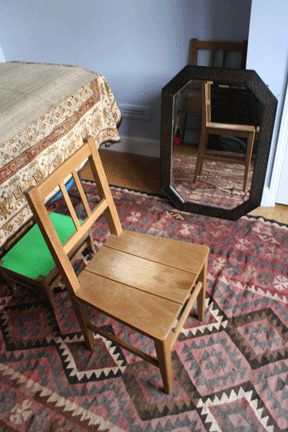
How can it help me?
Firstly, ANYONE can benefit ...
Poise, vitality and coordination improve.
Breathing and speaking become easier.
Movement becomes freer, lighter,
and more enjoyable.
An Alexander Technique practitioner teaches people to improve their posture and co-ordination to help bring about an improvement in their physical and mental well-being. They teach clients how to eliminate unnecessary muscular tension or poor posture, and so help to prevent or alleviate associated conditions. An improvement of head, neck and back co-ordination generally leads to improvements in health, fitness and general well-being.
Learning the Alexander Technique can help you to prevent or alleviate conditions associated with undue tension or poor posture. These include many difficulties with coordination and movement, joint and muscle problems, breathing disorders, and stress-related conditions.
Examining the way people carry themselves, move and hold tension can address the underlying cause of many such problems. The Alexander Technique can enhance rehabilitation after surgery, injury, or illness, and provide support during pregnancy and preparation for childbirth.
It can improve management of stress and pain, and provide coping skills for chronic illness and disabilities.
You learn the Alexander Technique through one-to-one lessons with a qualified teacher. This setting provides the best opportunity for your individual needs to be addressed.
How many lessons should I take?
The number of lessons you take will depend on your particular needs and goals, and these can be discussed with your teacher. Learning the Alexander Technique involves changing long-standing habits, so improvement relies in part on your active participation. A course of 20 to 30 regular lessons can provide a good foundation for on-going self-discovery for most people.
Please note that Alexander teachers, although highly trained, are not medical advisors and do not make medical diagnoses.

What will I be taught?
Your teacher will use explanation and a guiding touch to help you rediscover balance and ease within yourself. You start by working with simple movements and positions - such as sitting, walking, or bending the knees - which are basic to all activity. Through experience and observation, you learn how your coordination works - how you create tension and how you can prevent or release it.
This awareness enables you to change long-standing habits and function more efficiently. In time and with practice you will be able to use your new understanding and skill in more complex and demanding activities and situations in your daily life. You can bring awareness and poise to anything that you do.
Alexander lessons involve some movement, so you may be asked to wear non-restrictive clothing and remove your shoes.
During your course of lessons, you can learn how to:
* be poised and stand tall, without stiffness
* move gracefully and precisely, with greater ease
* be alert and focused, and calm at the same time
* be active and energetic, without excess effort or tension
* be more self-aware and coordinated from moment to moment, so your effort is appropriate to the task at hand.
In this way, you can avoid discomfort and strain in your daily life and favourite activities, and prevent wear and tear on your body. In short, you can perform better and achieve more, while wasting less energy.
How is the Alexander Technique different?
The understanding about yourself and your body that you gain in Alexander lessons gives you the ability to maintain the benefits and improvements on your own. Ultimately, you are empowered to help yourself.
How can the Alexander Technique help me handle stress?
With the Alexander Technique, you learn how to moderate your response to pressure. It can help you to avoid getting wound up or tense, so that you feel more collected and can think more clearly.
Will the Alexander Technique help with my bad back?
Back trouble is a frequent - though not the only - reason for having Alexander lessons.
The possible causes of back pain are many and varied, and you should always consult your doctor first about any medical problems before coming for lessons. Alexander teachers, while highly trained, are not medical advisors and do not make medical diagnoses.
The Alexander technique is used successfully by many back pain sufferers when poor posture, undue tension or similar factors are contributing to their condition. An increasing number of physiotherapists, osteopaths and general practitioners recommend the Alexander Technique to their patients for its preventative and self-help benefits.
I get tense and stiff working at a desk; can AT help?
Many of the habits that people adopt when seated for long hours at a desk - hunched over, legs crossed, shoulders and arms tense - are potentially harmful and can be exhausting. With the Alexander Technique you can improve the way you sit and work so that sitting well is more comfortable and less tiring or damaging.
Do I need to find a teacher who is specialised in my field of interest?
No - the skills you need to learn as a beginner are the same no matter what your reason for taking lessons. The Alexander Technique's principles and processes are basic to all learning and activity. Even if a teacher does not practice the same sport or have the same condition as you, if you explain your needs they can show you how the Alexander Technique applies.
Teachers may also have a special field in which they apply AT, out of their personal interest or history. You may eventually enjoy visiting such teachers if they are available in your area, but it is not a requirement for getting benefit.
